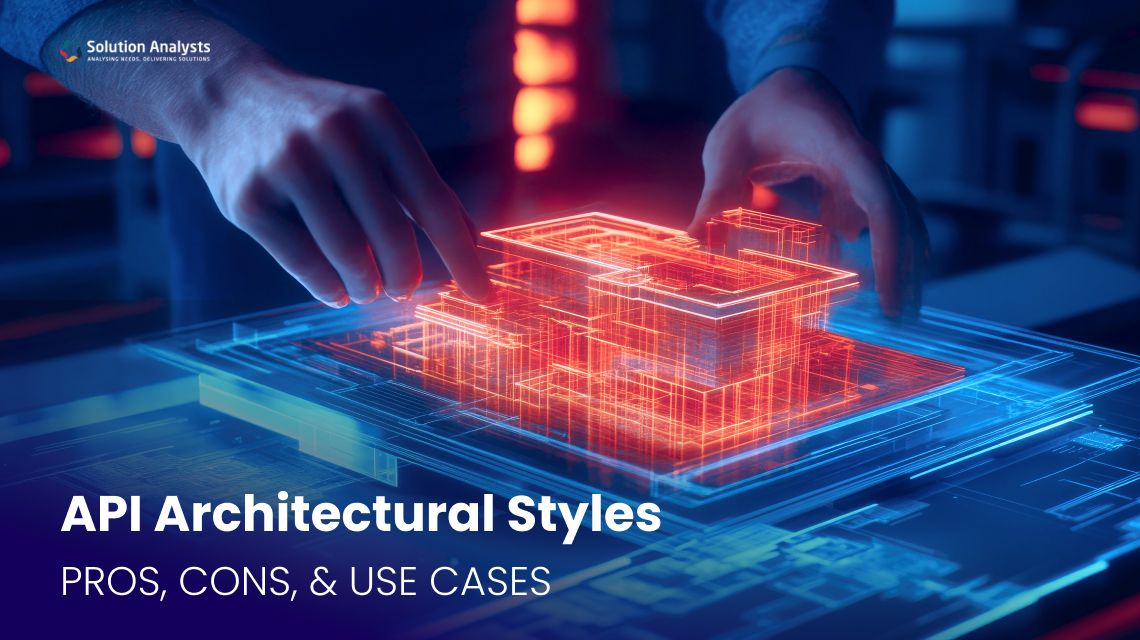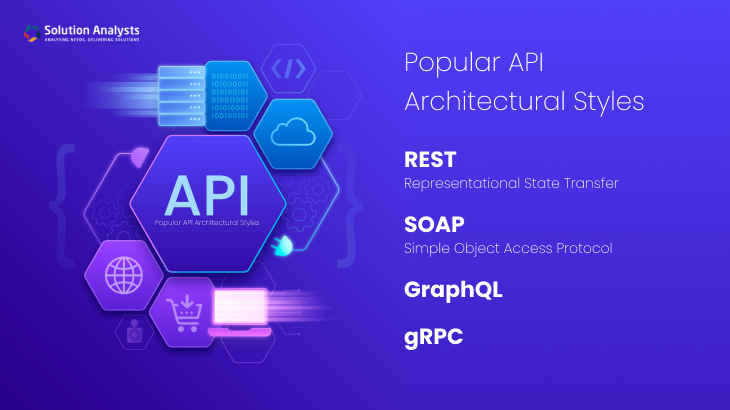
Table of Contents
Introduction
Application Programming Interfaces, or APIs, are the fundamental units of software development that enable communication between various software programs. Because it affects the system’s scalability, maintainability, and performance, selecting the appropriate API architectural style is essential. This blog examines a number of well-liked API architectural styles, stressing their benefits, drawbacks, and particular applications.
Common Styles of API Architecture
1. Representational State Transfer, or REST
One of the most popular architectural approaches for APIs is REST, which makes use of stateless communication and conventional HTTP methods. Its foundation is the idea of resources, which can be expressed in a variety of ways, including HTML, XML, and JSON. A URI (Uniform Resource Identifier) is used to identify each resource, and common HTTP methods such as GET, POST, PUT, and DELETE are used to perform operations on these resources.
Advantages: –
– Simplicity: CRUD (Create, Read, Update, Delete) activities are especially simple to comprehend and utilize.
– Scalability: RESTful APIs can scale effectively due to their stateless nature.
– Flexibility: Able to employ several request/response models, handle various call types, and return data in various forms.
Cons: –
– Overhead: May lead to needless data exchanges and large payloads.
– For operations that need stateful interactions, statelessness may be a constraint.
– It is less appropriate for situations that call for real-time communication.
Use cases
include open-source online service APIs (like the Google Maps and Twitter APIs).
Database management system CRUD functions.
weakly linked components in microservices architectures.
2. GraphQL
A comprehensive and intelligible description of the data in your API is provided by GraphQL, a query language for APIs and a runtime for carrying out such queries. Compared to REST, it enables clients to request just the data they require, perhaps leading to more efficient data retrieval.
Advantages: –
– Efficiency: Payload sizes are decreased so clients can only request the data they require.
– Flexibility: Makes it possible to combine several resources into one request.
– Strongly Typed: Uses strong typing to prevent errors and provide comprehensive documentation.
Cons: –
– Complexity: More difficult to master than REST, especially for new users.
– Overhead: Needs a more intricate server-side setup.
– Caching: In contrast to REST, this method is less simple.
Use cases
applications (like social media platforms) that call for intricate queries with relationships.
applications for mobile devices where bandwidth is an issue.
retrieving data in real time for analytical tools and dashboards.
3. gRPC
gRPC is an open-source, high-performance RPC framework that offers features like load balancing and authentication. It employs Protocol Buffers as the interface description language and HTTP/2 for transport. Both the client and the server can transmit a stream of messages thanks to gRPC’s bi-directional streaming capabilities. For real-time applications where data must be provided and received continuously, this is especially helpful. Furthermore, gRPC is perfect for polyglot contexts since it supports several languages, allowing various services to be developed in different languages while maintaining effective communication.
Advantages: –
– Performance: Excellent because it makes advantage of Protocol Buffers and HTTP/2.
– Real-time communication via streams is supported via bi-directional streaming.
– Multiple programming languages are supported by Language Agnostic.
Drawbacks: –
– Complexity: More difficult to set up and maintain than REST.
– Limited Browser Support: Additional layers are needed to access the web because it is not natively supported by browsers.
– Steeper Learning Curve: Needs knowledge of gRPC tools and Protocol Buffers.
Use cases
microservices in high-performance settings (like gaming and banking).
systems for real-time communication (such as live streaming and chat apps).
technologies (such large-scale distributed systems) that need to communicate effectively across languages.
4. Simple Object Access Protocol, or SOAP
Programs running on various operating systems can communicate with one another over a network using the messaging protocol SOAP (Simple Object Access Protocol). Web services are its main use, and it uses XML (Extensible Markup Language) to encode its messages, which are usually sent by SMTP (Simple Mail Transfer Protocol) or HTTP (Hypertext Transfer Protocol).
Advantages:
It is dependable for enterprise applications since it offers standardized message standards.
– Security: WS-Security and other advanced security features are supported.
– ACID Compliance: Facilitates trustworthy messages and transactions.
Cons: –
– Verbosity: Large XML payloads may result in higher bandwidth use.
– Complexity: More difficult to use and develop than REST.
– Performance: Slower than more lightweight options like gRPC and REST.
Use cases
business applications that need strong security, such government and financial institutions.
systems (like payment gateways) that require transactional reliability.
systems that are legacy and already use SOAP.
Conclusion
The particular requirements of your project will determine which API architectural style is best. Other forms, such as GraphQL, gRPC, and SOAP, offer distinct benefits for certain use situations, but REST is still a popular option due to its simplicity and scalability. Making an informed choice that fits the objectives of your project and the technical specifications requires an understanding of the advantages and disadvantages of each design.
Building scalable, effective, and secure systems requires an understanding of the subtleties of API architectural styles. Every style, including REST, SOAP, GraphQL, and newer trends like gRPC, has special benefits suited to various technical contexts and business requirements.
Our area of expertise at Solution Analysts is negotiating the intricate world of API designs. Our team of skilled developers and architects is committed to assisting companies just like yours in utilizing the best API solutions to boost productivity, increase security, and stimulate creativity. We design APIs that match your business objectives, guaranteeing flexibility and future-proofing, rather than merely implementing them.

Rajan Shah
Technical Manager
Rajan Shah is a Technical Manager at Solution Analysts. He brings almost a decade of experience and a genuine passion for software development to his role. He’s a skilled problem solver with a keen eye for detail, his expertise spans in a diverse range of technologies including Ionic, Angular, Node.js, Flutter, and React Native, PHP, and iOS.












 sales@solutionanalysts.com
sales@solutionanalysts.com biz.solutionanalysts
biz.solutionanalysts






